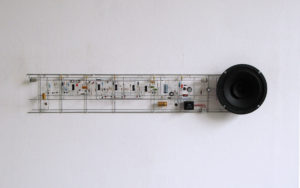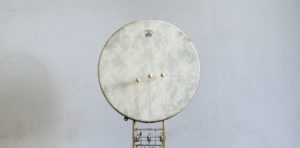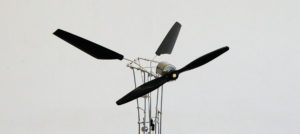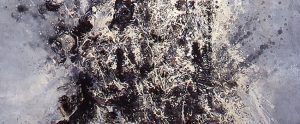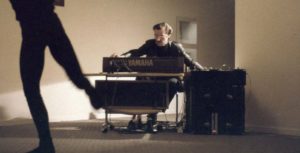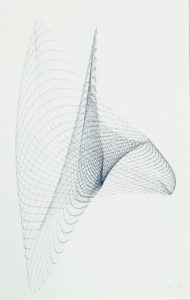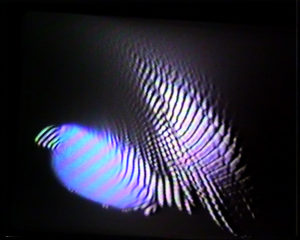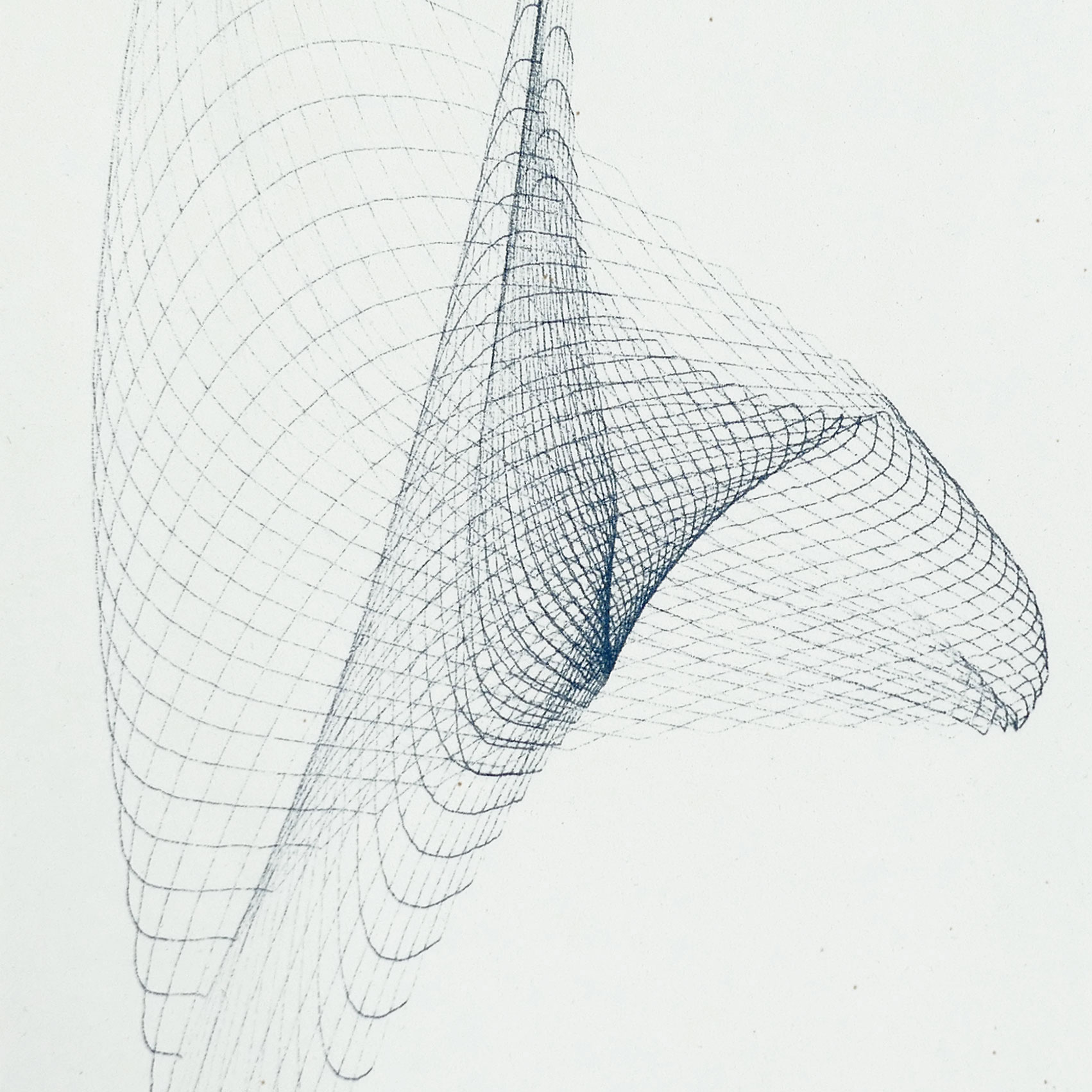
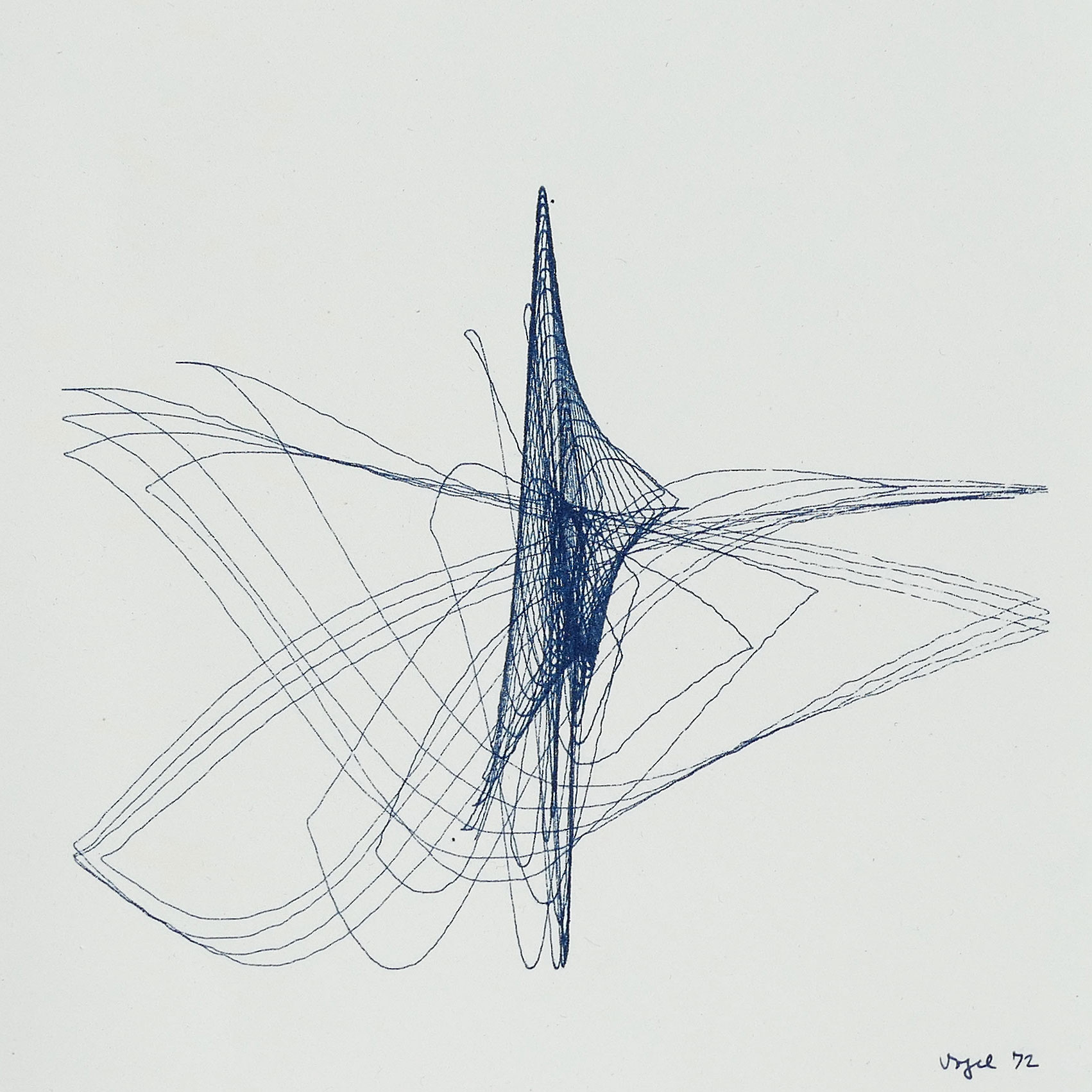
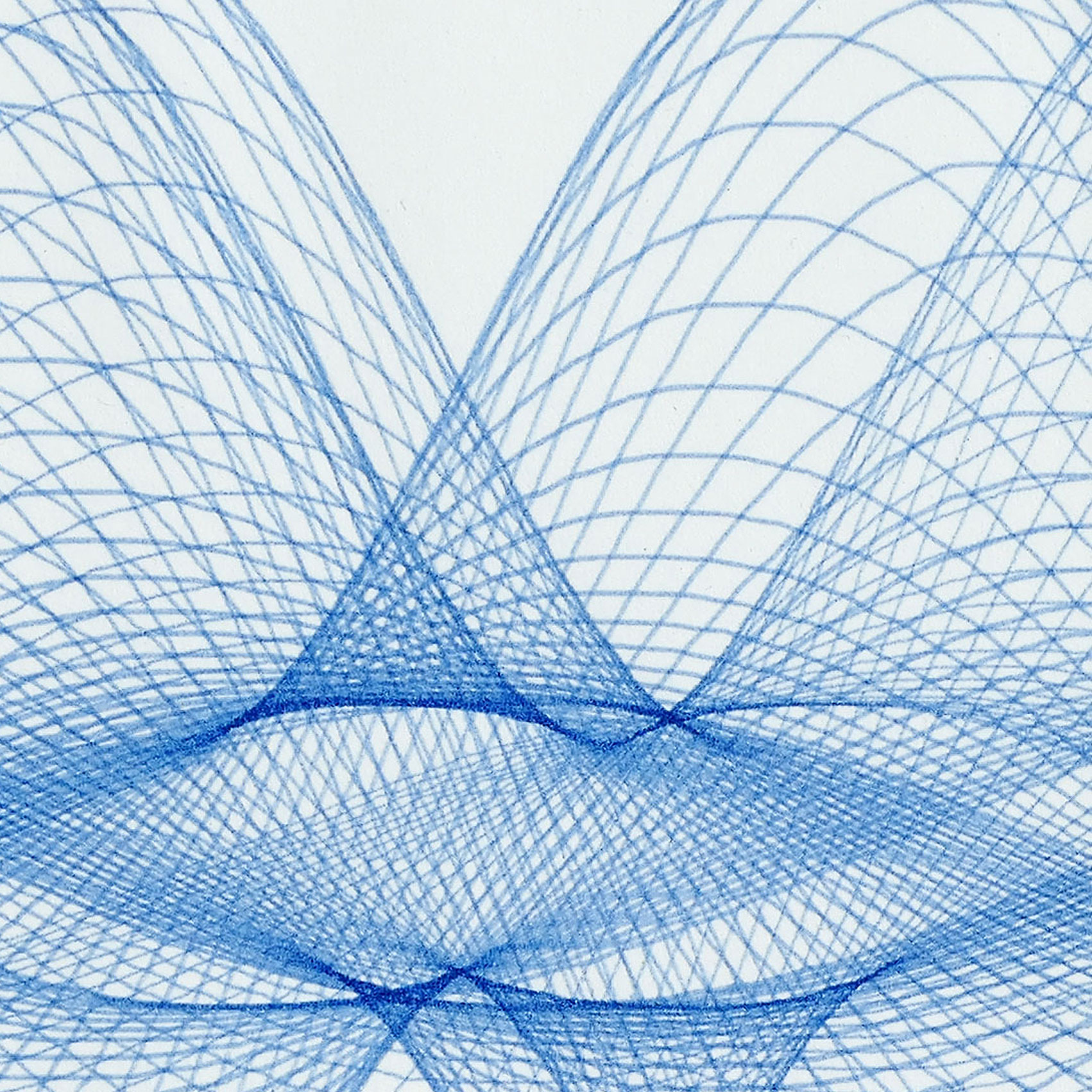
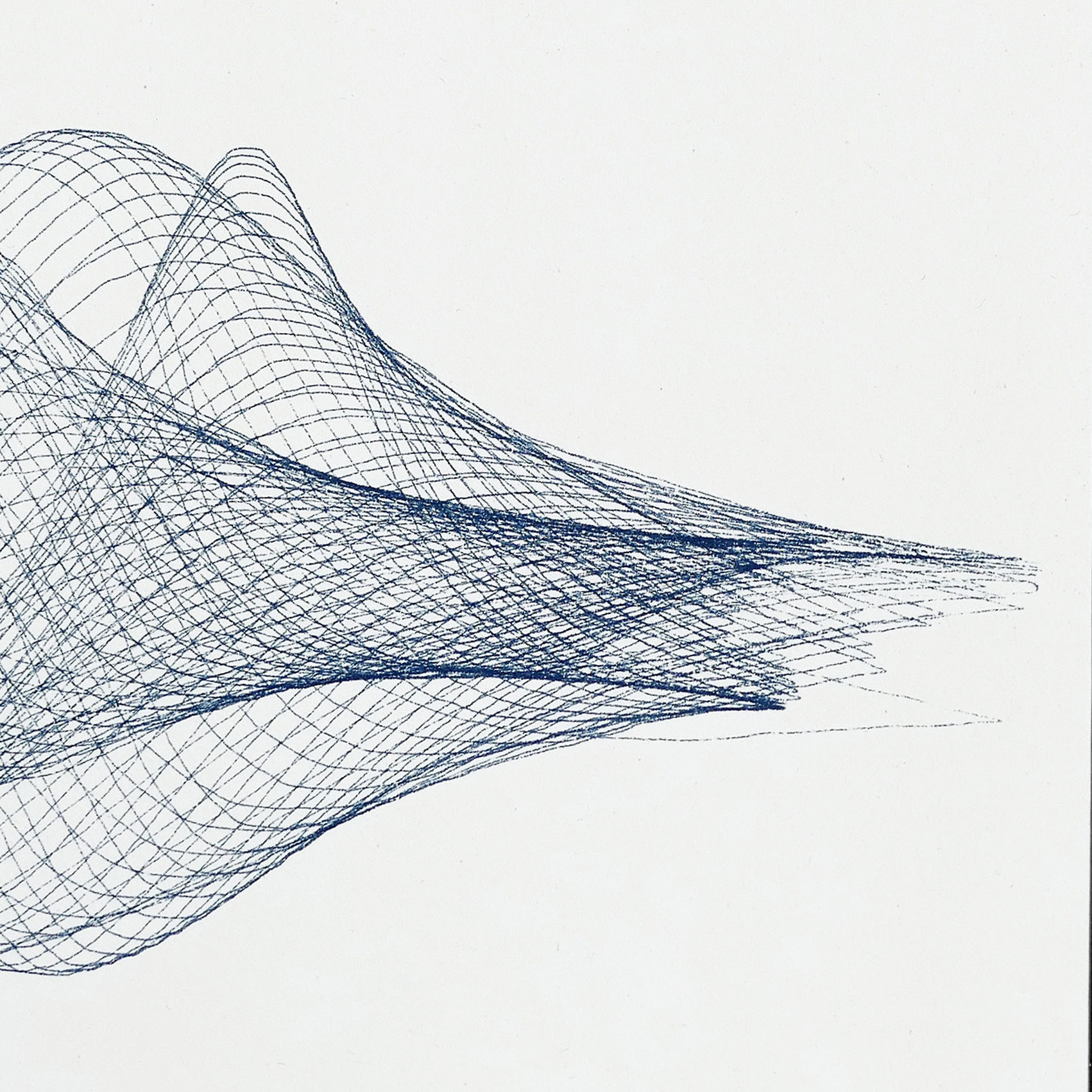
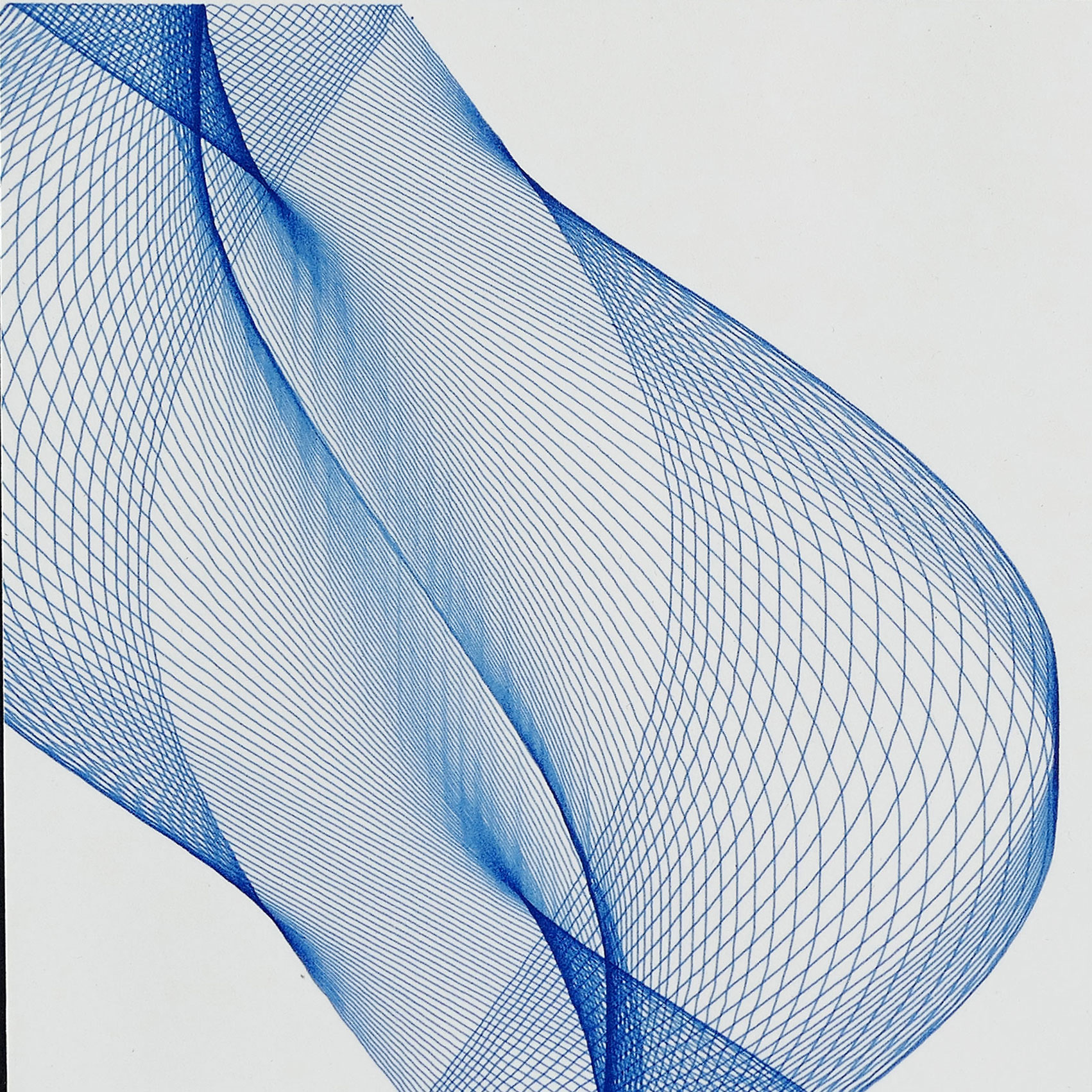
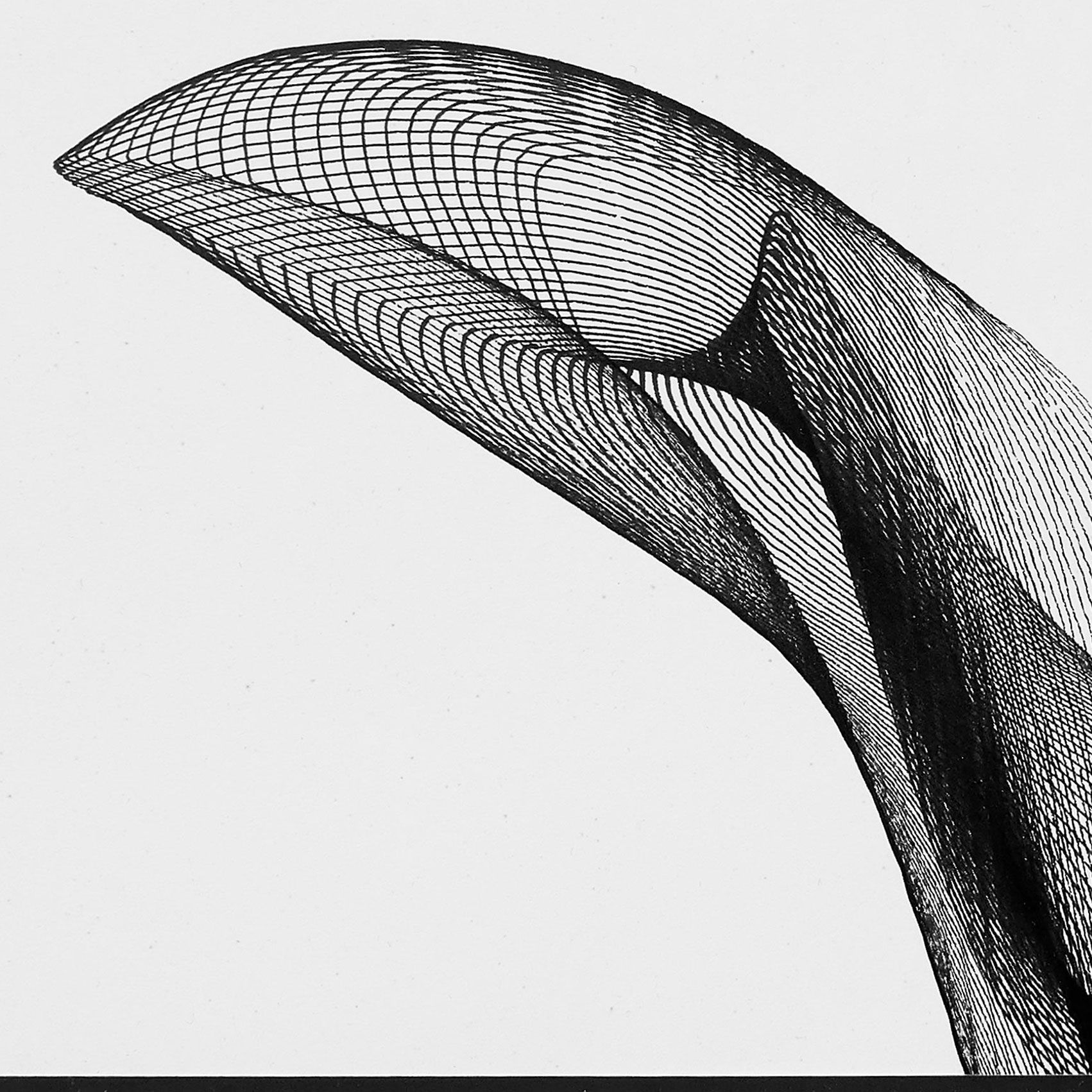
Analog computer graphics produced with plotter (x-y-writer) and frequency generators, ink on paper, Basel 1991
Computer graphics
“During my employment with Hoffmann-La Roche in Basel, I had access to a wide range of measuring instruments and electronic appliances, which were used here for research in the fringe area of medicine and technology. Among these, I could also find a printer for x- and y-coordinates, which could draw curves on paper. Voltages could be connected to the two inputs (one for the x-coordinate, one for the y-coordinate) whose changing voltage value could be recorded in two-dimensional form on paper (this kind of setting can be called an “analogue computer”). If for instance two sinusoidal signals of equal frequency are applied to both of the inputs, a circle, an ellipse or a straight line is drawn, depending on the phase position (the time delay between the two sinusoidal signals). If the two sinusoidal curves are different in frequency, the famous Lissajous-Figure is being drawn. In my drawing experiments I used two frequency generators with differing frequencies and wave-forms which I distorted additionally by interpolated electronic circuits, in order to add irregular parts to the drawings.
What fascinated me at this time with these drawings was their serene beauty and aesthetics in mathematical representations and laws (the even more interesting fractals, such as the Mandelbrot set, have not yet been known so well at that time). It is surprising that in the structure of our world so much beauty is hidden – not because it is too small and could only be recognized under the microscope, or because it is too far away and could only be made visible by telescope, but because it unfolds only on a non-material meta-plane, which can only be visited indirectly with the help of scientific methods. The machine-made graphics can be understood in this sense, as they unveil structures which are only being deduced from the laws of nature. The representation of these structures has a model-character, it is not reality but its “shadow”, which is being depicted on the man-made projection surface, just as the models of physics only describe aspects of reality.
(Peter Vogel – Ein Werkbuch, modo 2007)

